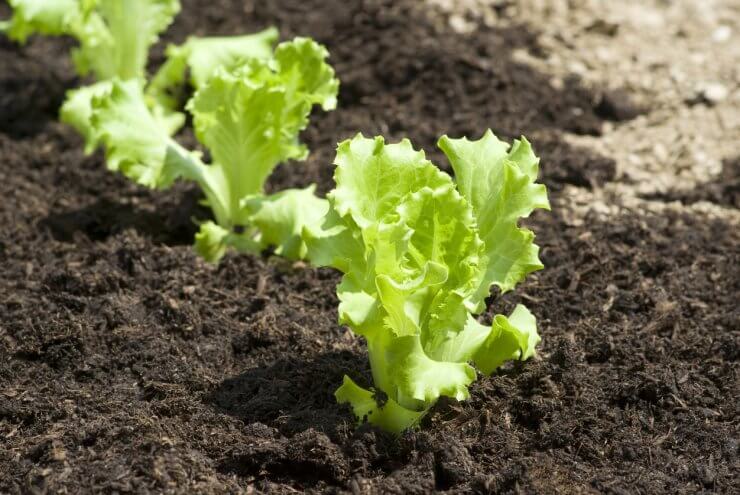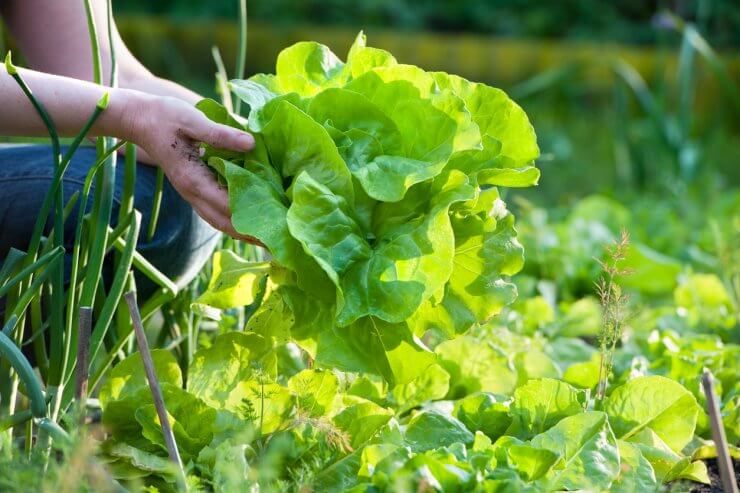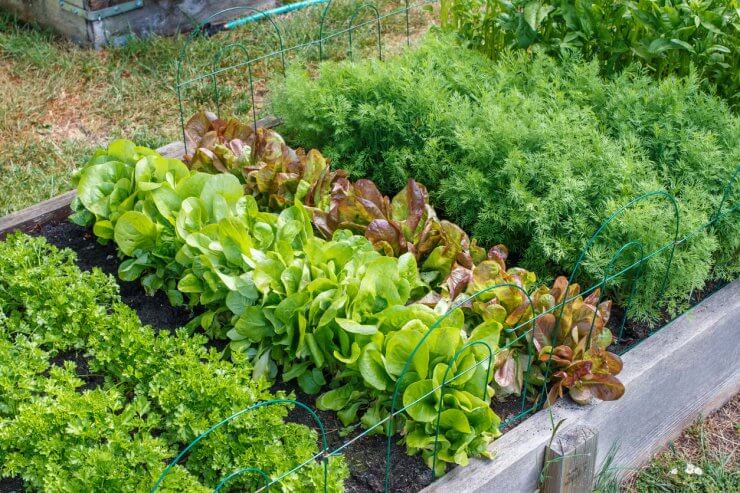
Nothing beats the satisfaction of harvesting your own crisp lettuce just weeks after planting. While tomatoes take months to ripen and peppers test your patience, lettuce is the sprinter of the vegetable garden, ready to grace your salad bowl in as little as 30 days. When my daughter and I plant our gardens (yes, she has her own now!) we are always looking forward to the early lettuce greens—and so do the pesky rabbits. Here’s how to master the art of lightning-fast lettuce production:
Choosing Your Fast-Growing Lettuce Varieties
Not all lettuce is created equal when it comes to harvest time. Leaf lettuce varieties are your best friends for quick harvests, ready in 30–45 days compared to head lettuce which needs 60–80 days. Here are the speed demons of the lettuce world:
Ultra-Fast Varieties (25–35 days):
- ‘Black Seeded Simpson’ – The champion at just 28 days
- ‘Grand Rapids TBR’ – Heat-tolerant and ready in 30 days
- ‘Red Sails’ – Gorgeous red-tinged leaves in 30 days
- ‘Prizehead’ – Bronze-red beauty at 28 days
- ‘Oak Leaf’ – Distinctive lobed leaves in 30 days
Quick Butterheads (40–50 days):
- ‘Buttercrunch’ – Compact heads perfect for small spaces
- ‘Tom Thumb’ – Tennis ball-sized heads, great for containers
- ‘Bibb’ – Classic Boston-type, sweet and tender
Speedy Romaine Options (45–55 days):
- ‘Little Gem’ – Mini romaine perfect for single servings
- ‘Paris Island Cos’ – Heat-tolerant traditional romaine
- ‘Flashy Trout Back’ – Speckled heirloom beauty
These loose-leaf types give you the bonus of “cut-and-come-again” harvesting, snip the outer leaves and the center keeps producing. If you want a lettuce hack, you might also enjoy growing some sorrel. Although sorrel isn’t technically a lettuce, it tastes similarly in salads and is a perennial, so it returns early every year and grows throughout the summer.
The Cool Season Advantage

Lettuce is what we call a “cool season crop,” thriving in temperatures between 45–75°F. This means you get two speed seasons per year in most climates: early spring and fall. Plant lettuce when soil temperatures are around 35–65°F–yes, it can handle near-freezing soil better than most vegetables can handle room temperature!
For the fastest germination, aim for soil temperatures around 60–65°F. Seeds will sprout in just 2–7 days under these conditions. In hot weather, germination slows dramatically, and you might wait two weeks for spotty results.
Pre-Sprouting Your Lettuce
Want to shave days off your harvest time? Try pre-sprouting your seeds. Place lettuce seeds between damp paper towels in a container, then store in your refrigerator for 24–48 hours. This cold stratification mimics winter conditions and can speed germination by up to 50%. You’ll see tiny white root tips emerging, that’s your cue to plant immediately.
Succession Planting for a Continuous Harvest
Here’s where the magic happens. Instead of planting all your lettuce at once, plant small amounts every 1–2 weeks. This technique, called succession planting, ensures you’ll have fresh lettuce ready for harvest continuously rather than a overwhelming glut followed by nothing.
Plant just what you can eat in a week–for most families, that’s about 6–10 plants. Mark your calendar and plant the next batch before you forget. Some gardeners plant new seeds every time they harvest a salad!
Space Optimization

Lettuce has a relatively small root system, making it perfect for intensive growing methods. Try these space-saving techniques:
- Square foot gardening: Plant 16 leaf lettuce plants per square foot, or 4 butterhead lettuces.
- Container growing: A 6-inch pot can hold one head of lettuce, while a window box can accommodate 4–6 leaf lettuce plants.
- Interplanting: Lettuce grows well between slower crops like tomatoes or peppers, utilizing space efficiently while providing living mulch.
The Fast-Track Growing Environment
Creating optimal conditions speeds everything up. Lettuce prefers loose, well-draining soil rich in organic matter. Mix compost or aged manure into the soil before planting, lettuce has shallow roots (just 6–8 inches deep) but thrives in rich, fertile ground.
Consistent moisture is crucial for speed. Lettuce is about 96% water, so any drought stress immediately slows growth. Drip irrigation or soaker hoses work beautifully, keeping soil evenly moist without wetting the leaves (which can encourage disease).
For the fastest growth, provide partial shade during hot weather. A simple shade cloth providing 30–50% shade can keep lettuce growing when it would otherwise bolt. In cooler weather, full sun accelerates growth.
Fertilization for Speed
Lettuce is a light feeder, but it responds well to consistent, gentle nutrition. A balanced fertilizer applied every 2–3 weeks keeps plants growing rapidly. Fish emulsion works wonderfully, dilute it to half strength and apply weekly for spectacular results.
Here’s a nerdy tidbit: lettuce actually grows faster with slightly higher nitrogen levels early in its life, then benefits from phosphorus as it matures. This is why many gardeners use a higher-nitrogen fertilizer initially, then switch to balanced feeding.
Harvesting Strategies for Maximum Speed
Don’t wait for perfect heads! Start harvesting outer leaves when plants are just 3–4 inches tall. This “baby leaf” harvesting gives you salads weeks earlier while encouraging continued growth.
For leaf lettuce, harvest outer leaves regularly, leaving the growing center intact. For head types, you can either harvest the entire head or try the “pony tail” method, cut the head leaving about an inch of stem, and often you’ll get a second, smaller head.
The key to speedy salads is starting early, planting often, and harvesting young. With these techniques, you’ll have fresh lettuce on your table from early spring through late fall, proving that good things really do come to those who plant, not wait.
Want to learn how to grow lettuce? In our Lettuce Gardening Guide, you get all the details that go into growing and harvesting delicious, leafy lettuce. Get recipes that go beyond the salad bowl and see what’s possible when you grow your own lettuce.
What’s your go-to lettuce variety for fast harvests and have you ever tried pre-sprouting your seeds for a head start? Share your experience with us in the comments!


 Previous
Previous

